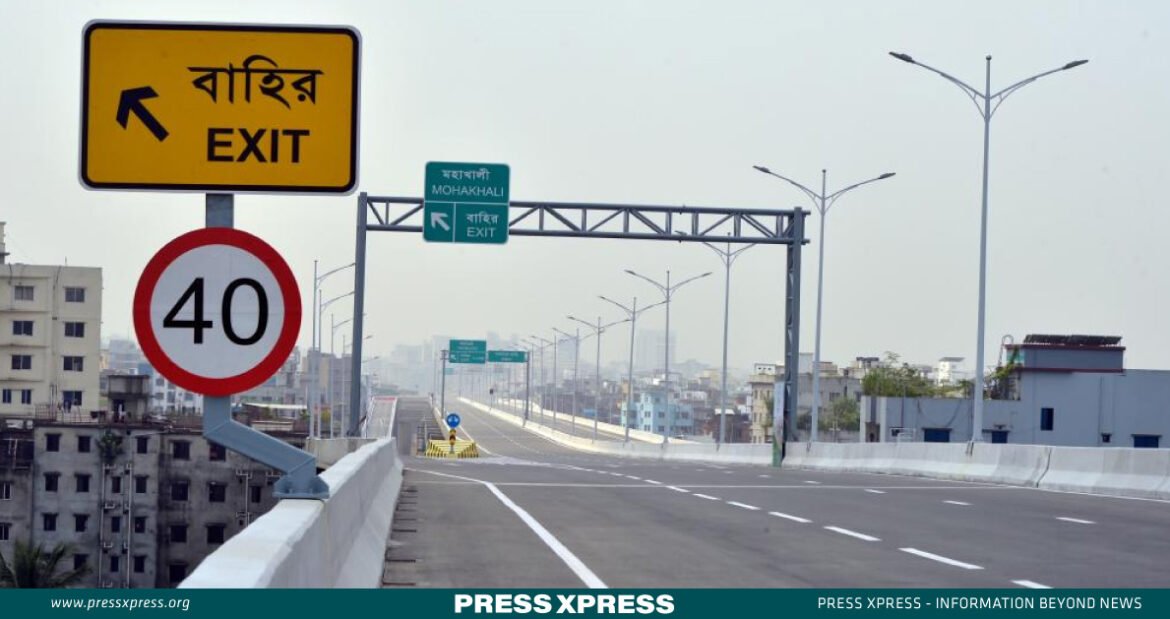As part of the commitment to achieving Sustainable Development Goal-9, Bangladesh has actively prioritized the construction of resilient infrastructure, the promotion of sustainable industrialization, and the cultivation of innovation within its comprehensive policy framework
The Bangladeshi government has consistently pursued ambitious mega-projects, and 2023 is no exception. Several of these projects are nearing completion, and many more are in the pipeline. Notable infrastructure achievements include the Bangabandhu Sheikh Mujibur Rahman Tunnel, the Third Terminal of Hazrat Shahjalal International Airport, the Padma Bridge Rail Link, and the Dhaka Elevated Expressway, all of which have already been inaugurated.
Large-scale infrastructure projects like these frequently receive limited attention in conversations about sustainable development. This omission becomes even more critical when considering the challenges posed by climate change, particularly in countries such as Bangladesh, which face significant vulnerability to climate-related hazards like cyclones and floods. Consequently, the pursuit of the Sustainable Development Goals (SDGs) is a central consideration in the planning and execution of these infrastructure development endeavors.
Resilient Infrastructure, Sustainable Industrialization and Innovation
Infrastructure and sustainable development represent a key focus within the spectrum of 17 Sustainable Development Goals (SDGs). As part of its commitment to achieving SDG 9, Bangladesh has actively prioritized the construction of resilient infrastructure, the promotion of sustainable industrialization, and the cultivation of innovation within its comprehensive policy framework.
Policy and planning instruments in the road sector are instrumental in directing investments to safeguard infrastructure assets, enhance connectivity, and boost road safety. The government has additionally initiated various projects to modernize, develop, and expand the nation’s telecommunications infrastructure and system.
Additionally, Bangladesh is channeling significant resources into infrastructure development due to the crucial functions of essential components such as transportation, energy, information and communication technology (ICT), water supply, sanitation, buildings, embankments, and cyclone shelters in advancing the nation’s progress.
Over the past decade, Bangladesh has experienced a notable upsurge in road infrastructure and connectivity. The country is actively engaged in an extensive spectrum of mega-projects spanning power and energy, transportation, railways, and port development to combat infrastructure limitations. Notably, Bangladesh’s policy direction places significant emphasis on leveraging technology to offer sustainable solutions to economic and environmental challenges, fostering job growth, and enhancing energy efficiency.
How Integrated Infrastructures are Reshaping Urban Living?
Bangladesh has embarked on an ambitious journey, with the construction of some of its most extensive development projects to date. These projects span various sectors such as low-cost housing, public infrastructure, power, energy, and communication infrastructure.

Furthermore, the successful launch of the Bangabandhu Satellite-1 on May 11, 2018, is a significant milestone. It’s worth highlighting that Bangladesh provided self-funding for the Padma Multipurpose Bridge. The infrastructure projects underway in Bangladesh have already started to influence the country’s economic growth rate. Extensive public investments in physical infrastructure and integrated connectivity networks have significantly contributed to trade, business, and socio-economic growth.
Rural Infrastructure Makeover in Progress
Presently, the policies regarding rural communication infrastructure include the upgrading of heavily used roads to dual lanes, sustainable maintenance of existing road networks, and the construction of new roads within villages. Additionally, the government has undertaken the construction and reconstruction of approximately 350,396 meters of bridges and culverts spanning rivers and streams.
Over the past decade, 2,154 growth centers (village markets), 1,438 Union Parishad complexes (the smallest electoral units), 346 Upazila complexes (sub-districts), and 1,762 cyclone shelter centers have been established. These rural infrastructure initiatives have emerged as pivotal drivers of Bangladesh’s rural economy.
Innovations in Agriculture Infrastructure
With a focus on food security, Bangladesh has been dedicated to enhancing rural infrastructure, especially in agricultural areas. In the 2020-2021 fiscal year, the government effectively carried out 18 irrigation projects and is currently underway with 10 more irrigation programs.
The government has successfully executed a range of initiatives including project development, canal and drain construction, the re-excavation of various sites, as well as the establishment of 300 irrigation structures. Additionally, they extended efforts to create 400 kilometers of irrigation channels, install 250 power pumps, provide electrification to 407 irrigation schemes, and set up 75 solar-powered irrigation pumps.

The challenge: Sustainable financing of infrastructure
In order to achieve the extensive infrastructure expansion outlined in Bangladesh’s Perspective Plan 2041 (PP41), significant financial resources will be required, particularly when considering the ongoing challenges to the economy, including setbacks like COVID-19, climate change, and international price volatility. As traditional drivers of economic growth such as domestic consumption and exports are anticipated to remain sluggish for an extended period, infrastructure development emerges as a key driver for stimulating aggregate demand and accelerating economic recovery.
The government of Bangladesh has acknowledged the significance of PPP initiatives in funding infrastructure projects in the near future. In order to secure sustainable financing for major infrastructure projects, the government plans to significantly enhance the PPP initiative by ensuring a skilled workforce and addressing necessary legal and incentive matters to attract international financing from top sources.
In conclusion, the story of Bangladesh’s journey towards resilient infrastructure, sustainable industrialization, and innovation is a remarkable testament to the transformative power of infrastructure development. It exemplifies how a nation, in the face of climate change challenges and economic adversity, can forge ahead by prioritizing the fortification of its foundations. As we look to the horizon, we are reminded that the foundation of any society is indeed its infrastructure, and in Bangladesh’s case, it’s a foundation firmly rooted in resilience, innovation, and sustainability.


